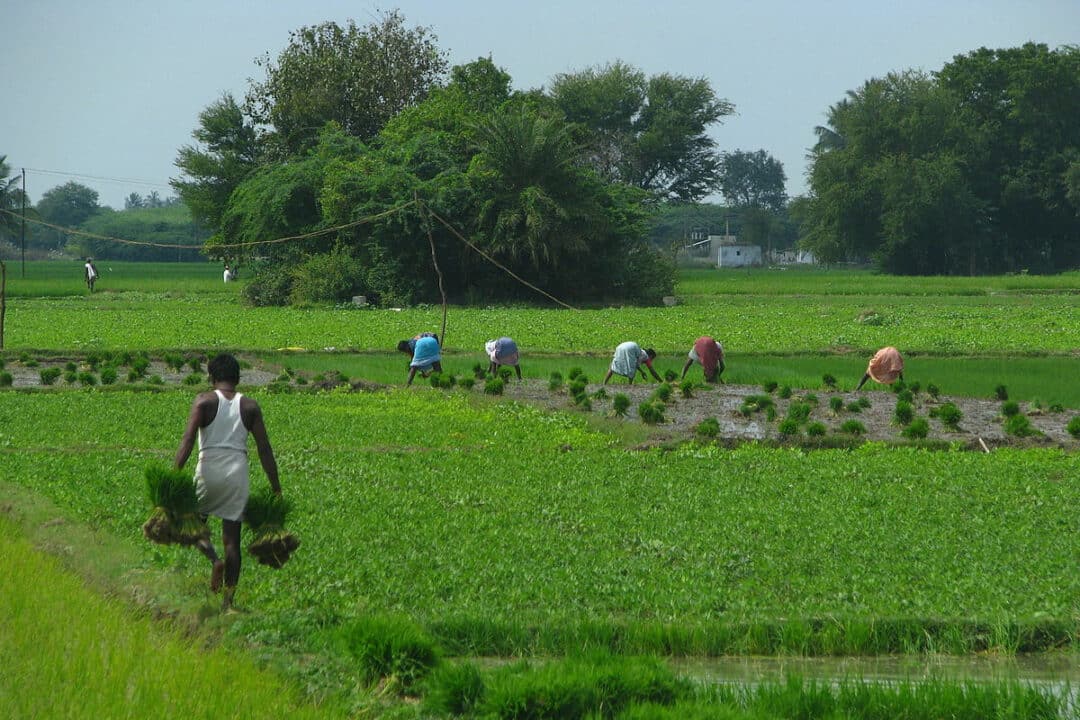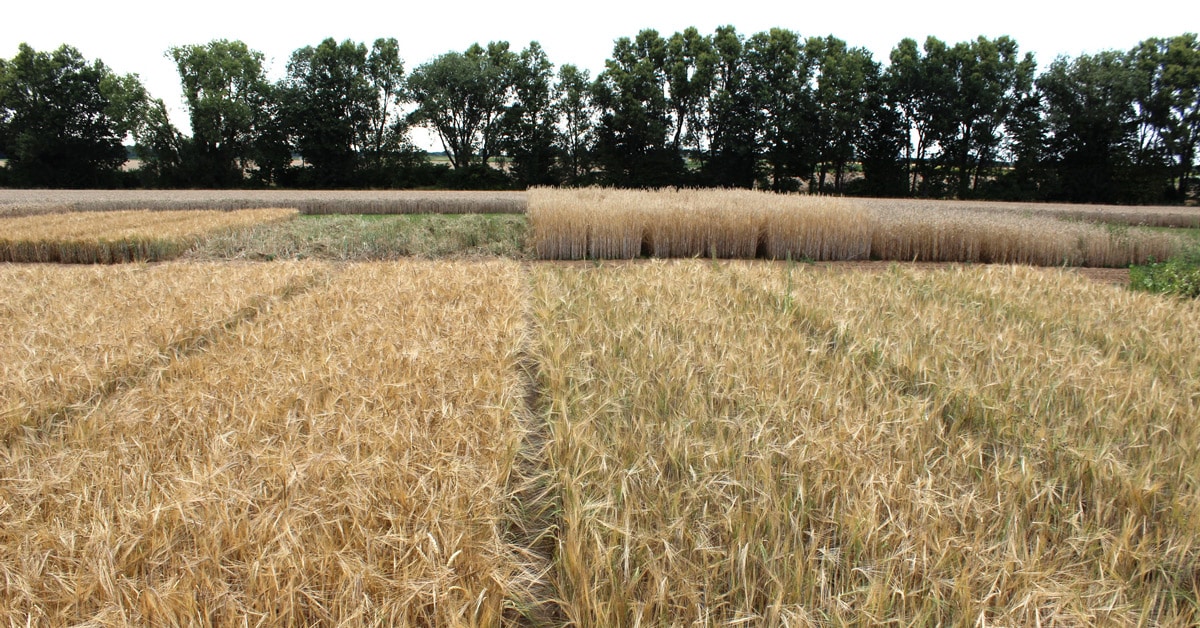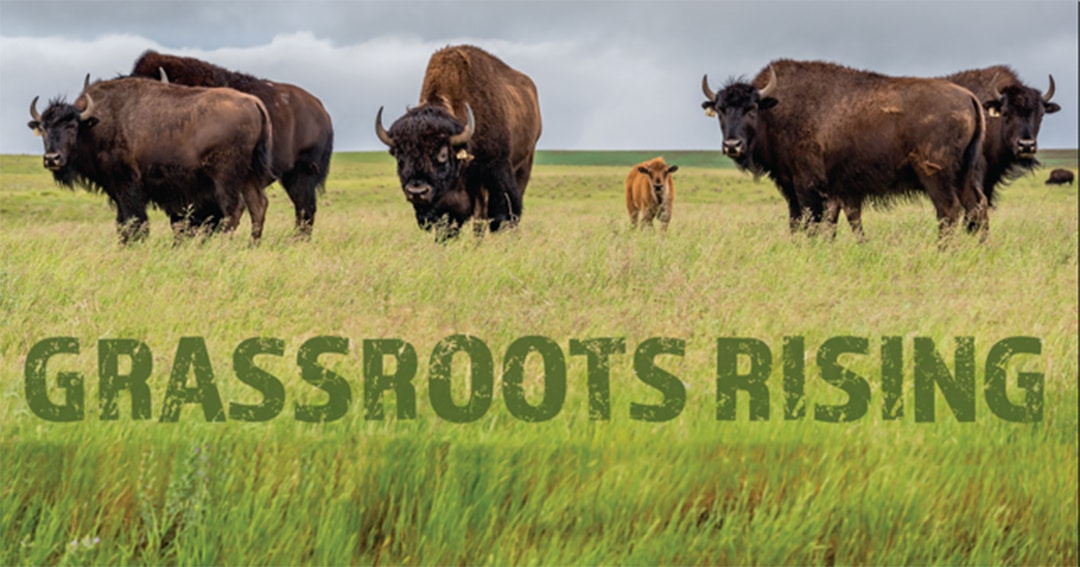

Paddy plantation in progress in Tamil Nadu in 2008. Photo by mckaysavage/Wikimedia Commons.
Community-based natural farming outshines other farming practices in Andhra Pradesh
- A study in Andhra Pradesh compares three prevalent farming methods, analysing their overall benefits such as production, economic impact and social and health implications.
- The study concludes that community-based natural farming offers superior benefits in terms of higher yields, crop diversity and income for farmers.
- While natural farming is being increasingly adopted by farmers in Andhra Pradesh and other states, standardisation can be achieved only through government approach.
Andhra Pradesh’s Community-Based Natural Farming (APCNF) defies the popular belief that chemical fertilisers guarantee better yields. According to a comparative study of prevalent farming practices in the state, conducted over two years in three districts of Andhra Pradesh, natural farming achieved remarkable results compared to other dominant farming systems in the region. On average, farmers practicing natural farming harvested four crops, with a 11% higher yield of prime crops such as paddy rice, maize, millet, finger millets and red gram. They saw a 49% net increase in their income.
To encourage natural farming, the government of India, in March this year, formulated the National Mission on Natural Farming (NMNF) with an initial budget of Rs. 4.59 billion for 2023-24.
Though many governments, including India’s, express interest in natural farming techniques, there is limited scientific literature that compares APCNF’s costs and benefits with prevalent farming systems, says the study. The study, Natural Farming Through a Wide-Angle Lens: True Cost Accounting Study of Community Managed Natural Farming, aims to fill the gap by providing evidence-based evaluation of natural farming in Andhra Pradesh to encourage a broader global uptake.
Study methodologies and findings
Led by impact data and analytics provider, GIST Impact, and supported by the Global Alliance for the Future of Food, the study compared the effects of Community-Managed Natural Farming (CNF) with three other farming systems prevalent in the region— chemical farming in the Godavari delta region, rainfed farming in the semi-arid region and low-input tribal farming in the mountainous region.
The researchers used the Economics of Ecosystems and Biodiversity for Agriculture and Food Systems (TEEBAgriFood), a framework that evaluates ecosystem services, biodiversity and human health to promote sustainable practices. Looking at data between 2020 and 2022, they evaluated yields in 13 districts using crop-cutting experiments and surveyed 562 farming households in three districts with diverse agroecological conditions, comparing CNF with counterfactual villages. The research covered 12 villages across three zones, representing around 10% of total farming households in the region.

Harvesting sorghum in Andhra Pradesh. The Indian government launched the National Mission on Natural Farming this year to encourage farmers to adopt natural farming. Photo by ILRI/Stevie Mann/Wikimedia Commons.
The research found that CNF farmers surveyed enjoy better results in all aspects —production, economic, social, and health impacts.
For example, CNF farmers grew an average of 4.51 crops compared to 2.16 in low-input tribal farming, 4.88 compared to 2.40 in rainfed farming and 2.92 compared to 1.84 in high-input farming. The adoption of CNF led to higher crop diversity, with an average of 4 crops compared to 2.1 on the counterfactual farms.
Additionally, it was found that CNF farmers experienced a 44% reduction in input costs (such as fertilisers and pesticides) compared to counterfactual farms across three regions. They also saw an average yield increase ranging from 7.8% to 25.9%. Overall, CNF adoption boosts gross income per hectare by $684 (+28.3%) across all three regions.
Social impacts
The study underlines CNF’s success in fostering social capital within the community, with women playing a significant role at the household level. CNF villages scored higher in all six dimensions of social capital, including information provision, mutuality, collective action, trust and support, community cohesion and risk reduction.
The findings indicate an intriguing relationship between land ownership and the social capital index, suggesting that smallholder farmers actively contribute to generating social capital. As agricultural land ownership increases, the social capital index decreases.
The study also highlights a notable difference in health impacts, indicating that CNF farming is associated with reduced on-farm health risks. On average, CNF farmers lose 121 work days yearly due to illnesses, while farmers in counterfactual systems lose 189 work days. Additionally, the household diet diversity score (HDDS) reveals that surveyed farmer households have a greater macronutrient diversity in their diets compared to the average Andhra food plate, showcasing their access to a wider range of food crops.
The CEO of GIST Impact and project director Pavan Sukhdev says that small farmers face the pressures of poverty more intensely as one or two bad monsoons can result in debt. Big farmers usually have enough capital and other businesses to support them.
“We have to increase the resilience of small farms, including how they can survive despite the changing climate and the current collapse of the climate system. The other [focus should be on] pricing. If you have good food, you will get better pricing, and better offtake means you will sell all,” he adds.
In India, the majority of farms, accounting for 85%, are small and marginal landholdings with less than two hectares of land.
Madhu Verma, an environmental economist and senior economic advisor of IORA Ecological Solutions, emphasises the significance of transitioning to organic farming and measuring its benefits. She points out that chemical fertilisers and pesticides used by farmers lead to negative environmental impacts or externalities, whereas organic farming turns these externalities into positive ones, resulting in larger environmental benefits over time.
Agricultural transition
The roots of Community-Managed Natural Farming in Andhra Pradesh lie in a social movement initiated by farmers who faced increasing debts after they had shifted to high-input chemical-based farming during the 1960s Green Revolution. The debt-ridden farmers shifted to agroecology-based farming, known as Zero Budget Natural Farming (ZBNF), which promised lower cost input and over the decades, millions of farmers in Karnataka and Andhra Pradesh have been practicing it.

Natural farming aims to reinject bacteria in the soil, restoring fertility and productivity. Photo by Ravi Kumar J/Wikimedia Commons.
In Andhra Pradesh, the ZBNF model evolved into what is now known as Community Managed Natural Farming (APCNF). It involves diverse food production by managing soil fertility through crop rotations, bioremediation, and natural pest control. This government-supported approach showcases the successful scaling of agroecology.
APCNF marks a large-scale transition to agroecology encompassing six million farmers and six million hectares, benefiting 50 million consumers. It bolsters rural livelihoods, ensures access to nutritious food, combats biodiversity loss, climate change, water scarcity, and pollution, the study claims.
There are three distinct agroecological regions in Andhra Pradesh — the Delta region with rich soil but high inputs, the dryland region facing water scarcity and the tribal regions in the northeastern part. Utilising the knowledge from master farmers, who understand the local conditions, is bolstering the success of natural farming.
Sukhdev explains that they have begun implementing this natural farming system in other states like Himachal Pradesh, Madhya Pradesh, Karnataka, and most recently, Meghalaya. The master farmers from Andhra Pradesh are also being taken to other states to share their knowledge and promote the adoption of natural farming.

A woman selling farm produce in local haat in Jhabua district of Madhya Pradesh. Photo by Srikant Chaudhary.
The core of the approach is to reinject bacteria in the soil, restoring fertility and productivity. Unlike traditional practices, where cow waste is used as fertiliser or compost, it is used as an inoculant to reinject bacteria into the soil. “I think the chances are that you will find slightly different variations of the theme in these different states, but it will succeed,” says Sukhdev.
Path to the wider reach
Sukhdev explains that the TEEB for Food and Agriculture project advocates a wide-angle lens approach, aiming to consider all dimensions of farming beyond mere yield per hectare, such as externalities, hidden costs, and benefits.
Notably, the project in Andhra Pradesh stands as the largest, involving lakhs of farmers in natural farming. Additionally, he said that similar holistic lenses have been applied in nearly 12 other projects worldwide, spanning from Mexico to Brazil, the United States, and New Zealand, yielding interesting results.
While adoption rates are strong, achieving standardisation requires government support. The endorsement of the TEEB for agriculture and food approach by major organisations like the Food and Agriculture Organisation (FAO) adds credibility to the initiative. “I am hoping [government support] will happen soon if we get the right people in the policy panel,” says Sukhdev.
Regarding methodologies to measure externalities, Verma describes it as a menu listing all benefits from living things that contribute to the system. While different quantification tools may yield varying values, the underlying benefits remain consistent.
Verma also highlights the need for standardisation of tools that can be universally adopted. She mentions NITI Aayog’s efforts in developing such a tool, in which Pavan Sukhdev and herself are also involved.




